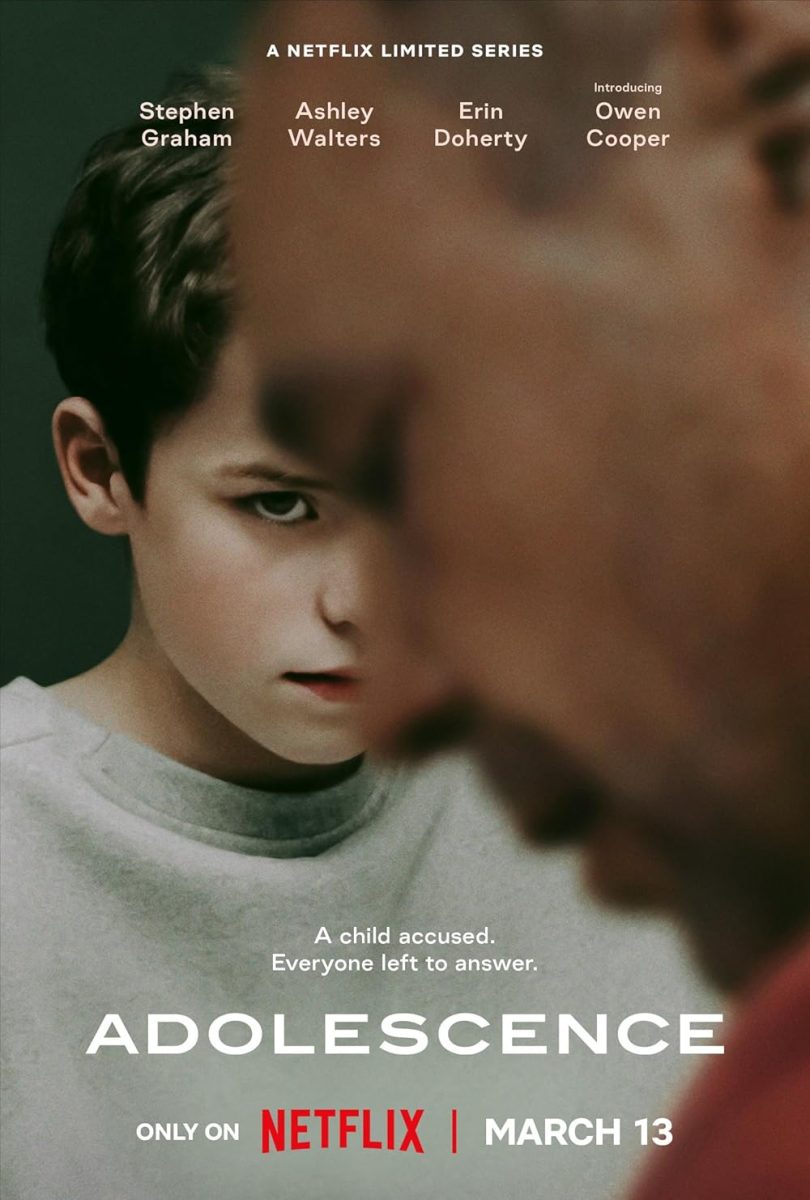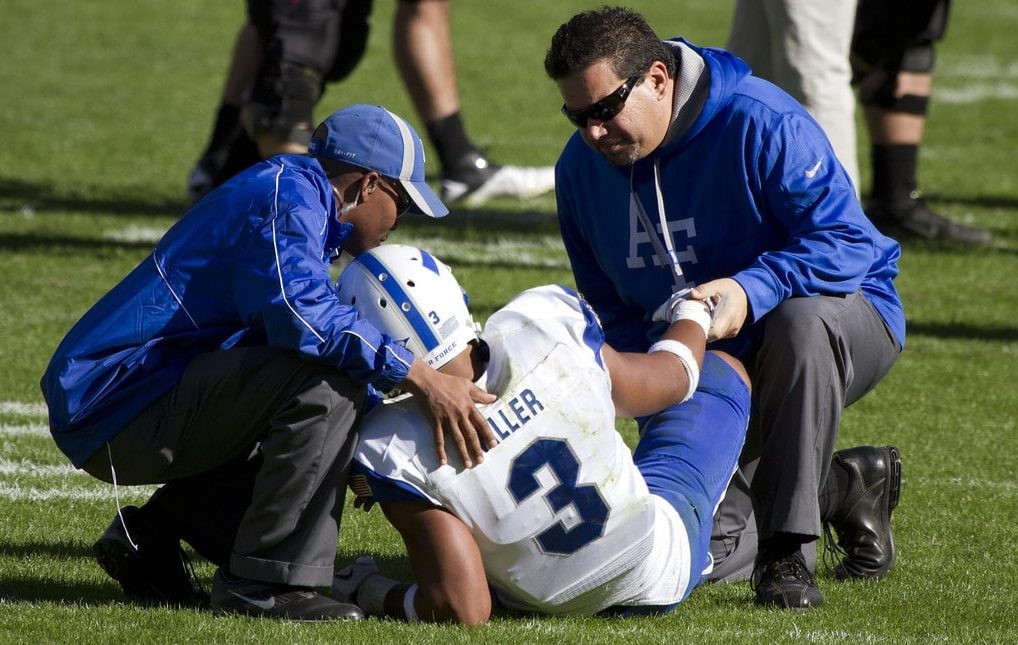“Millions of women and girls are affected by digital abuse and technology facilitated violence every year. Studies suggest that between 16 and 58 percent of women have experienced this type of violence” (UN Women). The limited TV show Adolescence on Netflix follows the story of a 13-year-old boy, Jamie Miller, and dives into his motive and mindset when he kills a female classmate. The past two decades have brought us mainstream social media, which has greatly changed how we interact with the world, make connections, and learn new things. Social media has also introduced cyberbullying, toxic rabbit holes, and anonymous violence, especially targeted towards women. Adolescence has unraveled the rug these topics were kicked under and brought attention to them. The question raised, has social media been justifying and promoting violence against women?
The first episode of Adolescence starts off with the Millers home being invaded by police. Jamie Miller, played by Owen Cooper, appears frightened when the police barge into his room and demand he leave with them. Jamie is being charged with the murder of a girl he knew named Katie Leonard, portrayed by Emilia Holiday. An important detail in this scene is when Jamie repeats the same phrase, “I haven’t done anything wrong.”
In the police car, Jamie is shaken and he sobs when he asks the police when he can see his dad again. This scene makes the viewer feel sympathetic towards Jamie. Surely a boy who seemed so frightened couldn’t commit such a crime. However while Jamie is being questioned by the police, he evades questions and gives incomplete answers. By the end of the episode a video of Jamie and Katie is shown. In the video, Jamie says something to Katie causing her to shove him, but she doesn’t go any further, she just walks away. As she’s walking away, violence ensues making Jaimie a murder suspect. The episode ends with Jamie’s dad crying and asking Jamie, “What have you done?” To which Jamie replies sobbing, “I haven’t done anything wrong.”
The digital world has given internet trolls the opportunity to harass and ridicule other people. Seventh grader Gabriela Lopez said, “On social media I think people often get judged for the way they look if they don’t look the way society wants them to.”
It’s well known that society, for decades, has picked and prodded at individuals who didn’t fit their ideal standard of beauty. With access to thousands of random people online, anyone can comment on anything. Every flaw, every scar, every insecurity is visible and is pointed out. Podcasts hosted by misogynists sneer at girls for not tapping into values held by women during the housewife era. In the show, it is revealed that Jamie sees women as less than men. Katie would call Jamie an “incel” which is the term for a man unable to find a romantic partner and as a result, they objectify and belittle women as a coping mechanism. The show mentions Andrew Tate and his infamous podcast that suggested women were to blame for their abuse and girls were weak and small compared to boys.
Watching these podcasts and being exposed to this kind of media tells young boys that women are less important than them. Across the span of the show, Jamie never once says “I didn’t do it,” rather “I didn’t do anything wrong.” This poses a complex question, did Jamie truly believe he didn’t do anything wrong? In the second and third episode, it explains how nude pictures of Katie were spread around their school. The spreading and creation of nude photos have been an issue for young girls for years. Over-sexualization of young women also plays a key role in this story. Seventh grader Lila Gilman stated: “Social media body shames a lot of women. Also, on social media there are a lot of artificial intelligence (AI) images, and that causes women to be hypersexualized by people.”
Throughout the third episode, Jamie says he asked out Katie after the photos of her were leaked because he believed that he would say yes to him since she was now more vulnerable. While talking about how Katie rejected him, Jamie is angered as he believed Katie couldn’t be with anyone else, so she owed him a yes.
In addition, social media has allowed people to slide under the radar when terrorizing other people, users can easily become anonymous and leave comments on people’s posts ridiculing and harassing them. Eighth grade Spanish teacher Mrs. Tara Rusingolo said, “Social media promotes a lot of emotional violence. People often leave rude comments on posts of women and comment on their physical appearance. This promotes all of objectifying women, and people don’t face consequences since they are behind a screen.”
The internet was made for everyone; what started as a small community of people looking to advance technologically and build connections turned into an empire of cruelness and insecurity. “Often on social media women get oversexualized and pictures get taken out of context,” said eighth grader Gemma Giordano.
Online, women who post pictures and videos of themselves will experience harsh backlash from viewers. Viewers who are insecure and angry with themselves take it out on other, innocent people. Adolescence illustrates how consuming so much negativity online can end up with someone else, or yourself, getting hurt. Jamie turns to objectifying women as a coping mechanism for when he gets bullied, but he sees his experience with a woman as the baseline for every conversation he has with one. Then he can internally justify his actions, only worsening his perspective.
Furthermore, women’s rights have been violated many times, whether it’s just a few words, or physical or sexual violence. World Health Organization explains the amount of woman that have been sexually or physically abused in all regions of the world, “Over a quarter of women aged 15–49 years who have been in a relationship have been subjected to physical and/or sexual violence by their intimate partner at least once in their lifetime (since age 15). The prevalence estimates of lifetime intimate partner violence range from 20% in the Western Pacific, 22% in high-income countries and Europe and 25% in the WHO Regions of the Americas to 33% in the WHO African region, 31% in the WHO Eastern Mediterranean Region, and 33% in the WHO South-East Asia region”(World Health Organization). The passage above reveals that women around the world are abused. Adding to the age of women getting abused is terrible. The ages range from 15-49, which means that girls in high school experience the same problem of consistent abuse.
Overall, Adolescence has provided an eye opening interpretation of the online world we live in. While the show focuses mainly on the vulnerable moments from Jamie’s perspective through his struggles before and after the murder, the show manages to capture a side of Jamie that is manipulative and psychotic. Some viewers interpreted the show as a murder mystery. In reality, the show divulges Jamie’s intentions and why he did it. Those who watch the show for the mysterious aspects lose the purpose of the show which proves that society has been dodging the issue of women’s violence and discrimination for far too long. So much so that the main plot of a TV show is missed entirely because people are afraid to acknowledge these injustices.









